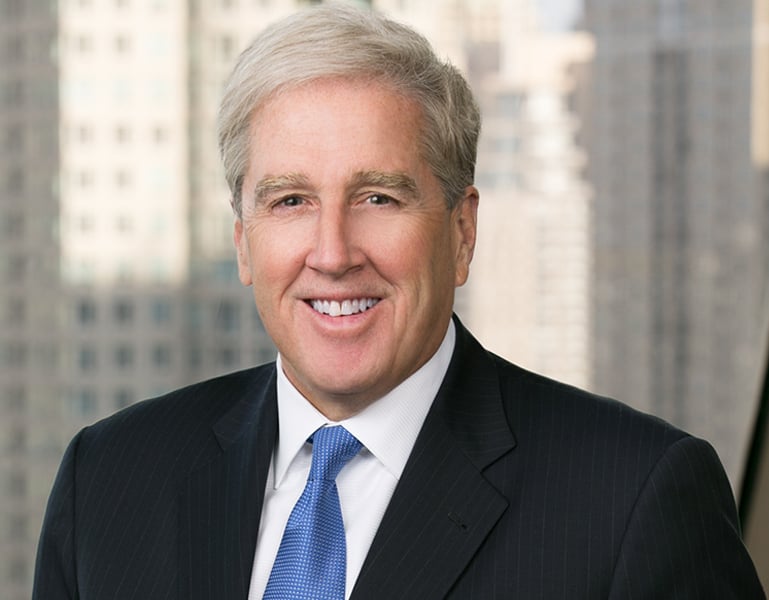PPP 2.0 Update – Interim Rules and Loan Applications
On January 6, 2021 and January 8, 2021, respectively, the Small Business Administration (the “SBA”) issued (a) implementing interim rules updating and defining the rules and requirements of the first and second round loans of the Paycheck Protection Program (“PPP”) and (b) the form of PPP loan applications to be used to process such loans. Under the revised PPP, certain borrowers will be eligible to receive either a first draw PPP loan (“PPP First Draw Loan”) or a second draw PPP loan (“PPP Second Draw Loan”), as applicable. Below is a summary of the material updates to the PPP. In addition, please refer to our bulletin, published on December 30, 2020, for additional information on the updated terms and conditions relating to PPP First Draw Loans and PPP Second Draw Loans.
Which borrowers are eligible to obtain a PPP First Draw Loan?
Under the SBA’s interim rules, a borrower that did not previously participate in the PPP may seek to obtain a PPP First Draw Loan. The criteria to obtain a PPP First Draw Loan remains consistent with the criteria previously issued by the SBA in 2020.
We note that the eligibility criteria for obtaining a PPP First Draw Loan are broader than the criteria for PPP Second Draw Loans. As discussed below, the eligibility criteria for PPP Second Draw Loans are more narrowly tailored to limit eligibility for PPP Second Draw Loans to smaller businesses that experienced a significant decrease in revenue.
Which borrowers are eligible to obtain a PPP Second Draw Loan?
To be eligible to obtain a PPP Second Draw Loan, borrowers must (a) have 300 or fewer employees and (b) be able to demonstrate a 25% reduction in its gross receipts (described below).
In calculating its employee headcount, a borrower must count all domestic and foreign employees, including full-time, part-time and temporary employees (i.e., those who receive a W-2). In addition, a borrower must include in this calculation the employees of any entity deemed to be an affiliate of the borrower in accordance with the SBA’s affiliation rules.
If a borrower currently has outstanding a PPP First Draw Loan, can a borrower obtain a PPP Second Draw Loan?
Yes. A borrower will be eligible to receive a PPP Second Draw Loan if (a) the borrower has received a PPP First Draw Loan and (b) has used, or will use, the full amount of the PPP First Draw Loan on or before the expected date on which the PPP Second Draw Loan is disbursed to the borrower. Note that the “full amount” of the PPP First Draw Loan would include any increase under an existing PPP First Draw Loan.
If a borrower has already submitted its PPP First Draw Loan forgiveness application, will the fact that its loan forgiveness application is under review delay or impact a borrower’s eligibility in obtaining a PPP Second Draw Loan?
Maybe. If a PPP First Draw Loan forgiveness application is under SBA review/audit and the SBA is reviewing a borrower’s eligibility in obtaining a PPP First Draw Loan, the SBA will notify the applicable PPP lender that it will not approve a PPP Second Draw Loan until the underlying matter is resolved. The SBA notes that it will seek to resolve such matters expeditiously.
How would an applicant borrower calculate and show the required 25% revenue reduction?
At the applicant borrower’s election, an applicant borrower can use either of the following comparative periods:
- Quarterly – A borrower may compare any quarter in 2020 to the same quarterly period in 2019 to demonstrate at least a 25% reduction in the borrower’s gross receipts during the applicable quarterly period. For example, a borrower would use a comparison of the Second Quarter of 2020 to the Second Quarter in 2019 if such comparison showed a 25% or greater reduction in gross receipts.
- Annually – A borrower that was in operation in all four quarters of 2019 may compare 2020 on an annual basis to 2019 on an annual basis if such comparison shows at least a 25% reduction in its gross receipts on an annual basis. We note that, to take advantage of this option, the borrower would be required to submit copies of its 2020 and 2019 annual tax forms substantiating the revenue decline.
How are “gross receipts” calculated?
The SBA has clarified that “gross receipts” will be defined in a manner consistent with 13 CFR 121.104. In general, under that provision, gross receipts are defined as meaning “total income,” which would include “all revenue in whatever form received or accrued from whatever source, including from the sales of products or services, interest, dividends, rents, royalties, fees, or commissions, reduced by returns and allowances.” Gross receipts would not include “net capital gains or losses, taxes collected for and remitted to a taxing authority if included in gross or total income, such as sales or other taxes collected from customers and excluding taxes levied on the concern or its employees; [and] proceeds from transactions between a concern and its domestic or foreign affiliates.”
We note that any loan forgiveness obtained on a PPP First Draw Loan would not be included in gross receipts.
What are the loan terms for PPP Second Draw Loans?
| PPP SECOND DRAW LOAN TERMS | |
| Interest Rate | 1.00% (non-compounding, non-adjustable basis) |
| Maturity 5 years | 5 years |
| SBA Guarantee | 100% |
| Collateral Requirement | None |
| Personal Guarantee Requirement | None |
How is the loan amount of a PPP Second Draw Loan determined?
In general, borrowers are eligible to receive an amount equal to 2.5x the borrower’s average monthly payroll for U.S.-based employees only, capped at $2 million. However, borrowers that are assigned a North American Industry Classification System (NAICS) code of 72 (Accommodation and Food Service) are eligible to receive an amount equal to 3.5x the borrower’s average monthly payroll, capped at $2 million.
We note that a borrower that is a part of a single corporate group that receives more than one PPP Second Draw Loan will be limited to $4 million in the aggregate.
How does a lender/borrower calculate the “average monthly payroll” of an applicant borrower for both PPP First Draw Loans and PPP Second Draw Loans?
| BORROWER TYPE | CALCULATION |
| Borrowers | At the option of the borrower, use the average monthly payroll for 2019 or 2020, excluding costs over $100,000 on an annualized basis, for each employee. Borrowers, other than self-employed, sole proprietorship or independent contractor borrowers, may also elect to use the average monthly payroll for the precise one-year period prior to loan disbursement. |
| Seasonal Borrowers | At the option of the borrower, the borrower may elect to use either (a) the average monthly payroll for 2019 or 2020 or (b) the average total monthly payroll for any 12-week period selected by the borrower between February 15, 2019 and February 15, 2020, in each case excluding costs over $100,000 on an annualized basis, for each employee. |
| New Business Borrowers | PPP First Draw Loans – For new businesses, average monthly payroll are to be calculated using the time period from January 1, 2020 to February 29, 2020, excluding costs over $100,000 on an annualized basis for each employee. PPP Second Draw Loans – For those borrowers without 12 months of payroll costs, but that were in operation as of February 15, 2020, average monthly payroll may be calculated based on the number of months in which payroll costs were incurred, excluding costs over $100,000 on an annualized basis for each employee. |
Is an applicant borrower still required to certify the economic necessity of the PPP Second Draw Loan?
Yes. Borrowers of both PPP First Draw Loans and PPP Second Draw Loans will again be required to certify that the “[c]urrent economic uncertainty makes this loan request necessary to support the ongoing operations of the Applicant.” Consistent with the SBA’s previously issued guidance, borrowers should review this certification carefully and adequately document the borrower’s specific circumstances and good faith determination that, at the time of submitting the PPP loan application, the PPP loan is economically necessary, including taking into account the borrower’s current level of business activities and the availability of alternative sources of additional liquidity, if any.
How will loan forgiveness be handled for PPP Second Draw Loans? Has the SBA made any material changes to the loan forgiveness process for PPP Second Draw Loans?
PPP Second Draw Loans will be subject to the same loan forgiveness terms and conditions as PPP First Draw Loans, except that borrowers of PPP Second Draw Loans with a total borrowed amount of less than $150,000 will be subject to more flexible loan forgiveness standards. For PPP Second Draw Loans of $150,000 or less, a borrower will be eligible for loan forgiveness if the borrower signs and submits a one page certification to its PPP lender (a) describing the number of employees the borrower was able to retain because of the PPP loan, the estimated amount spent on eligible payroll costs and total PPP loan value, and (b) attesting that it accurately provided the required certifications and complied with applicable PPP requirements. The form of certification is expected to be available by January 20, 2021.
We note that the SBA has indicated it intends to publish in the near term interim rules summarizing the loan forgiveness requirements and process for PPP First Draw Loans and PPP Second Draw Loans.
Are lenders held to the same PPP rules and requirements in originating PPP Second Draw Loans?
Yes. The interim rules issued by the SBA make clear that lenders are subject to the same requirements when making PPP Second Draw Loans as they are when making PPP First Draw Loans. The SBA states that this treatment will “allow a lender…to use existing program guidance and standard operating procedures to the maximum extent practicable.”
Vedder Thinking | Articles PPP 2.0 Update – Interim Rules and Loan Applications
Article
January 13, 2021
On January 6, 2021 and January 8, 2021, respectively, the Small Business Administration (the “SBA”) issued (a) implementing interim rules updating and defining the rules and requirements of the first and second round loans of the Paycheck Protection Program (“PPP”) and (b) the form of PPP loan applications to be used to process such loans. Under the revised PPP, certain borrowers will be eligible to receive either a first draw PPP loan (“PPP First Draw Loan”) or a second draw PPP loan (“PPP Second Draw Loan”), as applicable. Below is a summary of the material updates to the PPP. In addition, please refer to our bulletin, published on December 30, 2020, for additional information on the updated terms and conditions relating to PPP First Draw Loans and PPP Second Draw Loans.
Which borrowers are eligible to obtain a PPP First Draw Loan?
Under the SBA’s interim rules, a borrower that did not previously participate in the PPP may seek to obtain a PPP First Draw Loan. The criteria to obtain a PPP First Draw Loan remains consistent with the criteria previously issued by the SBA in 2020.
We note that the eligibility criteria for obtaining a PPP First Draw Loan are broader than the criteria for PPP Second Draw Loans. As discussed below, the eligibility criteria for PPP Second Draw Loans are more narrowly tailored to limit eligibility for PPP Second Draw Loans to smaller businesses that experienced a significant decrease in revenue.
Which borrowers are eligible to obtain a PPP Second Draw Loan?
To be eligible to obtain a PPP Second Draw Loan, borrowers must (a) have 300 or fewer employees and (b) be able to demonstrate a 25% reduction in its gross receipts (described below).
In calculating its employee headcount, a borrower must count all domestic and foreign employees, including full-time, part-time and temporary employees (i.e., those who receive a W-2). In addition, a borrower must include in this calculation the employees of any entity deemed to be an affiliate of the borrower in accordance with the SBA’s affiliation rules.
If a borrower currently has outstanding a PPP First Draw Loan, can a borrower obtain a PPP Second Draw Loan?
Yes. A borrower will be eligible to receive a PPP Second Draw Loan if (a) the borrower has received a PPP First Draw Loan and (b) has used, or will use, the full amount of the PPP First Draw Loan on or before the expected date on which the PPP Second Draw Loan is disbursed to the borrower. Note that the “full amount” of the PPP First Draw Loan would include any increase under an existing PPP First Draw Loan.
If a borrower has already submitted its PPP First Draw Loan forgiveness application, will the fact that its loan forgiveness application is under review delay or impact a borrower’s eligibility in obtaining a PPP Second Draw Loan?
Maybe. If a PPP First Draw Loan forgiveness application is under SBA review/audit and the SBA is reviewing a borrower’s eligibility in obtaining a PPP First Draw Loan, the SBA will notify the applicable PPP lender that it will not approve a PPP Second Draw Loan until the underlying matter is resolved. The SBA notes that it will seek to resolve such matters expeditiously.
How would an applicant borrower calculate and show the required 25% revenue reduction?
At the applicant borrower’s election, an applicant borrower can use either of the following comparative periods:
- Quarterly – A borrower may compare any quarter in 2020 to the same quarterly period in 2019 to demonstrate at least a 25% reduction in the borrower’s gross receipts during the applicable quarterly period. For example, a borrower would use a comparison of the Second Quarter of 2020 to the Second Quarter in 2019 if such comparison showed a 25% or greater reduction in gross receipts.
- Annually – A borrower that was in operation in all four quarters of 2019 may compare 2020 on an annual basis to 2019 on an annual basis if such comparison shows at least a 25% reduction in its gross receipts on an annual basis. We note that, to take advantage of this option, the borrower would be required to submit copies of its 2020 and 2019 annual tax forms substantiating the revenue decline.
How are “gross receipts” calculated?
The SBA has clarified that “gross receipts” will be defined in a manner consistent with 13 CFR 121.104. In general, under that provision, gross receipts are defined as meaning “total income,” which would include “all revenue in whatever form received or accrued from whatever source, including from the sales of products or services, interest, dividends, rents, royalties, fees, or commissions, reduced by returns and allowances.” Gross receipts would not include “net capital gains or losses, taxes collected for and remitted to a taxing authority if included in gross or total income, such as sales or other taxes collected from customers and excluding taxes levied on the concern or its employees; [and] proceeds from transactions between a concern and its domestic or foreign affiliates.”
We note that any loan forgiveness obtained on a PPP First Draw Loan would not be included in gross receipts.
What are the loan terms for PPP Second Draw Loans?
| PPP SECOND DRAW LOAN TERMS | |
| Interest Rate | 1.00% (non-compounding, non-adjustable basis) |
| Maturity 5 years | 5 years |
| SBA Guarantee | 100% |
| Collateral Requirement | None |
| Personal Guarantee Requirement | None |
How is the loan amount of a PPP Second Draw Loan determined?
In general, borrowers are eligible to receive an amount equal to 2.5x the borrower’s average monthly payroll for U.S.-based employees only, capped at $2 million. However, borrowers that are assigned a North American Industry Classification System (NAICS) code of 72 (Accommodation and Food Service) are eligible to receive an amount equal to 3.5x the borrower’s average monthly payroll, capped at $2 million.
We note that a borrower that is a part of a single corporate group that receives more than one PPP Second Draw Loan will be limited to $4 million in the aggregate.
How does a lender/borrower calculate the “average monthly payroll” of an applicant borrower for both PPP First Draw Loans and PPP Second Draw Loans?
| BORROWER TYPE | CALCULATION |
| Borrowers | At the option of the borrower, use the average monthly payroll for 2019 or 2020, excluding costs over $100,000 on an annualized basis, for each employee. Borrowers, other than self-employed, sole proprietorship or independent contractor borrowers, may also elect to use the average monthly payroll for the precise one-year period prior to loan disbursement. |
| Seasonal Borrowers | At the option of the borrower, the borrower may elect to use either (a) the average monthly payroll for 2019 or 2020 or (b) the average total monthly payroll for any 12-week period selected by the borrower between February 15, 2019 and February 15, 2020, in each case excluding costs over $100,000 on an annualized basis, for each employee. |
| New Business Borrowers | PPP First Draw Loans – For new businesses, average monthly payroll are to be calculated using the time period from January 1, 2020 to February 29, 2020, excluding costs over $100,000 on an annualized basis for each employee. PPP Second Draw Loans – For those borrowers without 12 months of payroll costs, but that were in operation as of February 15, 2020, average monthly payroll may be calculated based on the number of months in which payroll costs were incurred, excluding costs over $100,000 on an annualized basis for each employee. |
Is an applicant borrower still required to certify the economic necessity of the PPP Second Draw Loan?
Yes. Borrowers of both PPP First Draw Loans and PPP Second Draw Loans will again be required to certify that the “[c]urrent economic uncertainty makes this loan request necessary to support the ongoing operations of the Applicant.” Consistent with the SBA’s previously issued guidance, borrowers should review this certification carefully and adequately document the borrower’s specific circumstances and good faith determination that, at the time of submitting the PPP loan application, the PPP loan is economically necessary, including taking into account the borrower’s current level of business activities and the availability of alternative sources of additional liquidity, if any.
How will loan forgiveness be handled for PPP Second Draw Loans? Has the SBA made any material changes to the loan forgiveness process for PPP Second Draw Loans?
PPP Second Draw Loans will be subject to the same loan forgiveness terms and conditions as PPP First Draw Loans, except that borrowers of PPP Second Draw Loans with a total borrowed amount of less than $150,000 will be subject to more flexible loan forgiveness standards. For PPP Second Draw Loans of $150,000 or less, a borrower will be eligible for loan forgiveness if the borrower signs and submits a one page certification to its PPP lender (a) describing the number of employees the borrower was able to retain because of the PPP loan, the estimated amount spent on eligible payroll costs and total PPP loan value, and (b) attesting that it accurately provided the required certifications and complied with applicable PPP requirements. The form of certification is expected to be available by January 20, 2021.
We note that the SBA has indicated it intends to publish in the near term interim rules summarizing the loan forgiveness requirements and process for PPP First Draw Loans and PPP Second Draw Loans.
Are lenders held to the same PPP rules and requirements in originating PPP Second Draw Loans?
Yes. The interim rules issued by the SBA make clear that lenders are subject to the same requirements when making PPP Second Draw Loans as they are when making PPP First Draw Loans. The SBA states that this treatment will “allow a lender…to use existing program guidance and standard operating procedures to the maximum extent practicable.”



